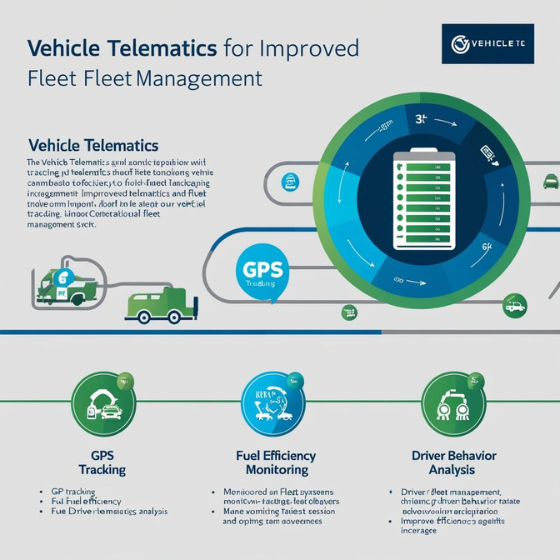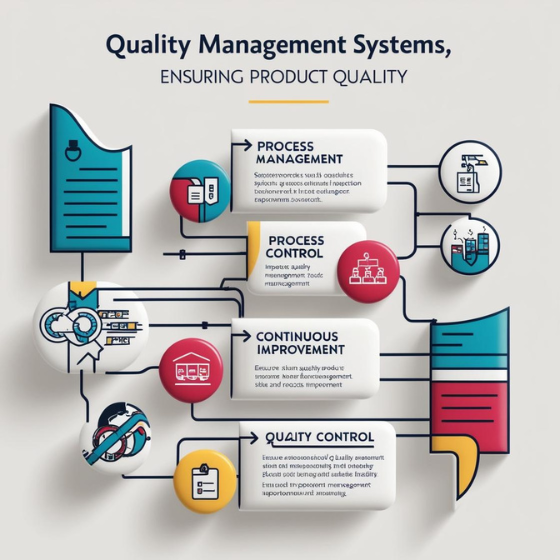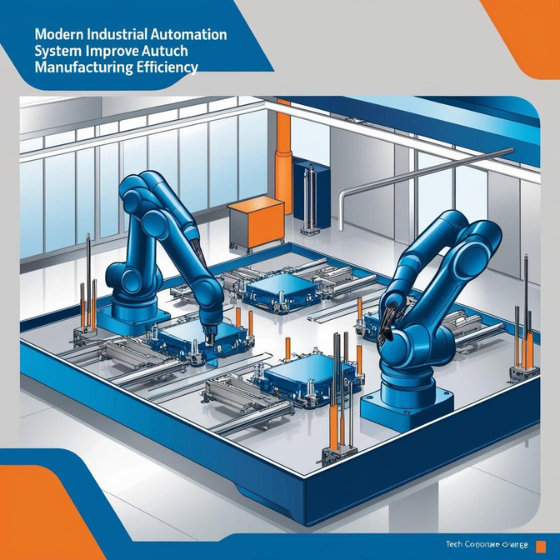Vehicle Telematics: Improving Fleet Management
In the ever-evolving world of fleet management, technology plays a vital role in optimizing operations, improving safety, and reducing costs. One of the key innovations that has revolutionized the industry is vehicle telematics. This powerful technology allows fleet managers to track and manage their vehicles in real-time, gather data on vehicle performance, and gain insights into driver behavior, all contributing to more efficient fleet operations.
In this blog, we will explore what vehicle telematics is, its key features, and how it can significantly improve fleet management. We will also discuss best practices for implementing telematics systems to maximize the benefits for your business.
What is Vehicle Telematics?
Vehicle telematics refers to the integration of telecommunications and monitoring systems to collect, transmit, and analyze data from vehicles. Telematics devices are typically installed in vehicles to track location, speed, fuel consumption, engine health, driver behavior, and other critical metrics. This data is then transmitted to a central system or cloud-based platform where fleet managers can access real-time information.
Key aspects of telematics systems include:
- GPS Tracking: Provides the real-time location of each vehicle.
- Vehicle Diagnostics: Monitors vehicle health, such as engine performance, tire pressure, and fuel levels.
- Driver Behavior Monitoring: Tracks driving patterns like speeding, harsh braking, and acceleration.
- Fleet Analytics: Compiles and analyzes data to optimize routes, improve fuel efficiency, and reduce downtime.
By gathering these insights, telematics systems help businesses improve efficiency, reduce costs, and increase the safety of their fleets.
Key Benefits of Vehicle Telematics for Fleet Management
1. Improved Fleet Visibility and Tracking
One of the most significant advantages of telematics is the ability to track the location of every vehicle in the fleet in real-time. This visibility helps fleet managers monitor driver routes, ensure vehicles are on schedule, and quickly identify issues like delays or detours. By having full visibility of your fleet, you can make data-driven decisions that improve route planning and optimize vehicle usage.
For example, if a driver is delayed or taking an inefficient route, fleet managers can make real-time adjustments to improve delivery times, reduce fuel consumption, and enhance customer satisfaction.
2. Enhanced Fuel Management and Efficiency
Fuel costs are one of the largest expenses for any fleet, and telematics systems provide a wealth of data to help reduce fuel consumption. By monitoring fuel usage and analyzing driving behavior, telematics systems can identify patterns of inefficient driving, such as excessive idling, speeding, or harsh braking. These insights can help fleet managers implement strategies to improve fuel efficiency, such as:
- Optimizing routes to avoid traffic congestion and reduce mileage.
- Encouraging drivers to adopt more fuel-efficient driving habits.
- Identifying and addressing maintenance issues that could be affecting fuel economy.
By using telematics to monitor and manage fuel consumption, fleets can significantly reduce their operating costs.
3. Improved Maintenance and Vehicle Health Monitoring
Telematics also plays a critical role in vehicle maintenance by providing real-time diagnostic data. Fleet managers can monitor engine performance, tire pressure, battery health, and other important metrics to ensure vehicles are running efficiently and avoid unexpected breakdowns. Regular maintenance alerts based on the data collected by telematics devices can help fleet operators schedule service and repairs before problems become costly or lead to vehicle downtime.
Additionally, tracking vehicle health through telematics helps extend the lifespan of the fleet, reducing the need for premature replacements and improving overall fleet performance.
4. Increased Safety and Risk Management
Vehicle telematics can improve fleet safety by providing insight into driver behavior and vehicle performance. With telematics systems in place, fleet managers can monitor factors like:
- Speeding
- Harsh braking
- Rapid acceleration
- Vehicle collisions or incidents
By tracking these behaviors, fleet managers can identify drivers who may need additional training or coaching to improve their driving skills. Implementing a safer driving culture can reduce the risk of accidents, lower insurance premiums, and enhance the overall safety of the fleet.
In addition to monitoring driver behavior, telematics systems can also provide real-time alerts for vehicle safety issues such as tire pressure drops or engine malfunctions. This enables fleet managers to take preventive measures and avoid accidents or breakdowns that could affect both the vehicle and driver.
5. Regulatory Compliance and Reporting
Telematics can help fleet operators comply with industry regulations and maintain accurate records for reporting purposes. For example, telematics systems can help track:
- Hours of Service (HOS) compliance for drivers.
- Fuel tax reporting (IFTA).
- Vehicle inspection reports and maintenance logs.
Having this data readily available ensures that fleet operators can easily meet legal requirements, avoid penalties, and maintain compliance with local and national regulations.
How to Implement Vehicle Telematics for Your Fleet
To successfully implement vehicle telematics in your fleet, follow these steps to ensure a smooth transition and maximize the benefits:
1. Choose the Right Telematics Provider
The first step in implementing telematics is selecting the right provider for your fleet’s needs. There are many telematics solutions available, ranging from simple GPS tracking to more comprehensive platforms that offer advanced analytics, diagnostics, and driver behavior monitoring. When choosing a telematics system, consider the following factors:
- Scalability: Can the system grow with your fleet as it expands?
- Integration: Does the system integrate with your existing fleet management software?
- Customization: Can the platform be tailored to your specific fleet needs?
- Support and Training: Does the provider offer training and ongoing support for your team?
2. Install Telematics Devices in Vehicles
Once you’ve selected a telematics provider, the next step is installing the necessary hardware in your vehicles. Depending on the system, this may include GPS tracking devices, sensors for diagnostics, or additional components to monitor driver behavior. Many telematics systems are designed for easy installation and can be retrofitted into existing fleet vehicles.
3. Train Drivers and Fleet Managers
To fully leverage the power of telematics, both drivers and fleet managers should be properly trained on how to use the system. Drivers should understand the benefits of monitoring their behavior and how it can impact their performance and the overall efficiency of the fleet. Fleet managers need to be familiar with the platform’s capabilities so they can effectively analyze the data and make informed decisions.
4. Analyze Data and Optimize Fleet Operations
Once the telematics system is in place, it’s time to start using the data to optimize your fleet operations. Regularly analyze reports on fuel consumption, driver behavior, maintenance alerts, and vehicle performance. Use this data to make adjustments to routes, improve driver performance, and schedule preventive maintenance to avoid costly downtime.
5. Monitor and Adjust as Needed
Telematics systems are most effective when continually monitored and adjusted based on changing fleet needs. Continuously evaluate system performance and make changes to improve operational efficiency. Regularly assess the technology and update software or hardware components to ensure your fleet management system stays current with industry trends.
Conclusion
Vehicle telematics has revolutionized fleet management, providing managers with the tools they need to optimize vehicle performance, reduce operating costs, improve safety, and ensure regulatory compliance. By tracking real-time data on everything from driver behavior to vehicle diagnostics, fleet managers can make more informed decisions and improve overall fleet efficiency.
At Sodio, we specialize in developing custom software solutions, including telematics systems that can be integrated into your fleet management processes. Whether you need real-time tracking, advanced analytics, or driver behavior monitoring, our expert team is here to help you optimize your fleet operations.
Contact us today to learn how we can support your business with cutting-edge fleet management solutions.







